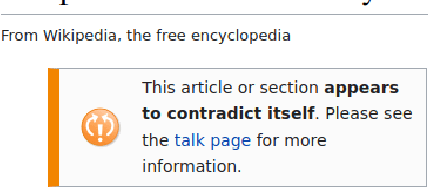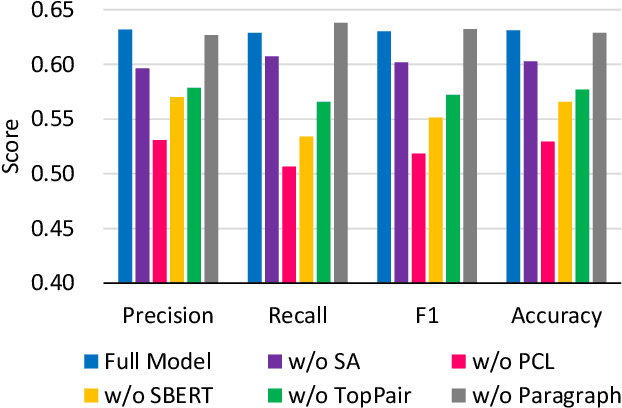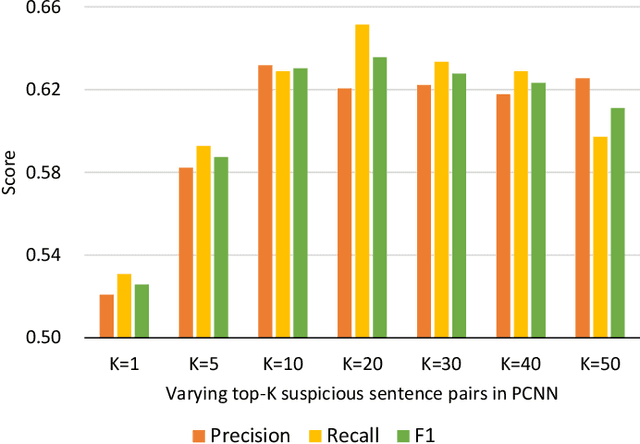WikiContradiction: Detecting Self-Contradiction Articles on Wikipedia
Paper and Code
Nov 16, 2021



While Wikipedia has been utilized for fact-checking and claim verification to debunk misinformation and disinformation, it is essential to either improve article quality and rule out noisy articles. Self-contradiction is one of the low-quality article types in Wikipedia. In this work, we propose a task of detecting self-contradiction articles in Wikipedia. Based on the "self-contradictory" template, we create a novel dataset for the self-contradiction detection task. Conventional contradiction detection focuses on comparing pairs of sentences or claims, but self-contradiction detection needs to further reason the semantics of an article and simultaneously learn the contradiction-aware comparison from all pairs of sentences. Therefore, we present the first model, Pairwise Contradiction Neural Network (PCNN), to not only effectively identify self-contradiction articles, but also highlight the most contradiction pairs of contradiction sentences. The main idea of PCNN is two-fold. First, to mitigate the effect of data scarcity on self-contradiction articles, we pre-train the module of pairwise contradiction learning using SNLI and MNLI benchmarks. Second, we select top-K sentence pairs with the highest contradiction probability values and model their correlation to determine whether the corresponding article belongs to self-contradiction. Experiments conducted on the proposed WikiContradiction dataset exhibit that PCNN can generate promising performance and comprehensively highlight the sentence pairs the contradiction locates.
 Add to Chrome
Add to Chrome Add to Firefox
Add to Firefox Add to Edge
Add to Edge